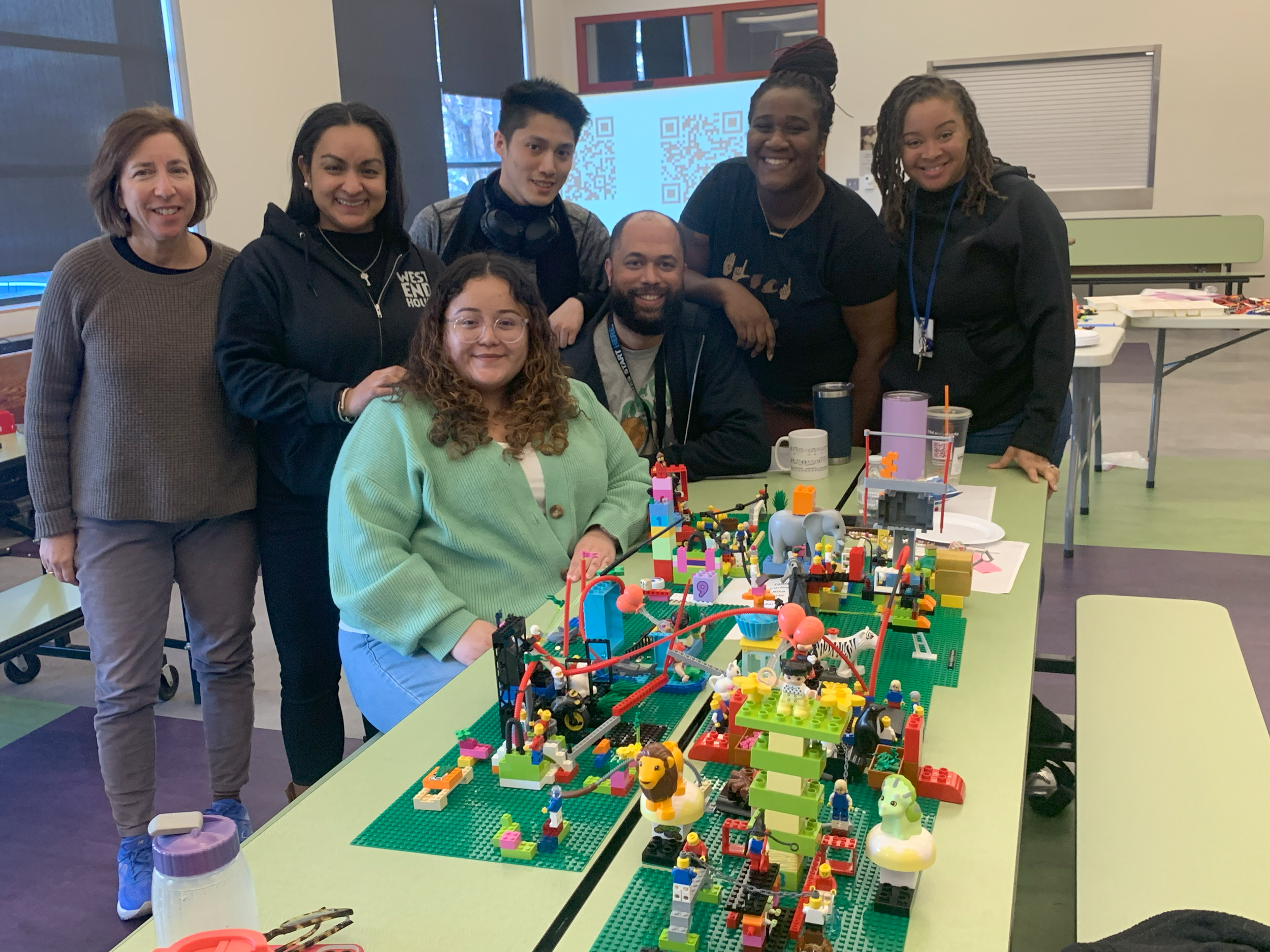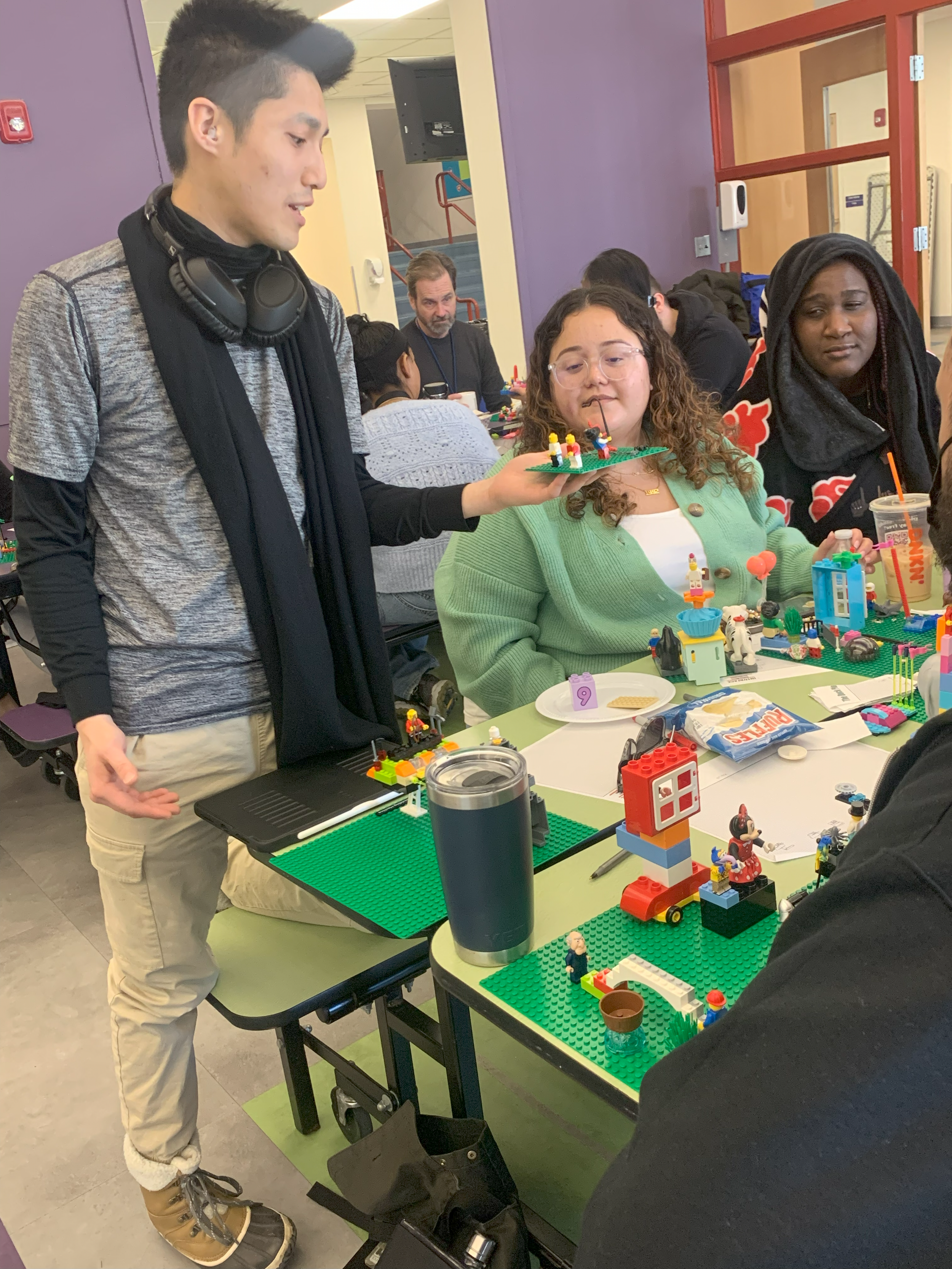Thinking With Your Hands: Designing Logic Models Using Lego® Serious Play®
Overview
BOTN collaborated with organization staff to develop a comprehensive data collection and utilization strategy. The client faced challenges with disconnected program-level logic models and various data collection tools, including surveys, participation data, and demographics. These tools operated in isolation, lacking alignment with each other and the organization's overall intended outcomes and impact.
To establish an efficient and effective data strategy with buy-in from leadership, staff, and participants, the first step was to create a model of how all the programs work together. This visual would show how each program helps reach the organization's goals. A plan could be created, based on the visual, to collect useful information without doing extra work. Additionally, it could check if programs were working well and make changes if needed. The client emphasized the need for an inclusive design process, involving staff from all leadership levels as well as the young people served by the organization.
Project Objectives
Design a comprehensive visualization of program offerings and intended impact by incorporating voices and perspectives from various stakeholders.
Staff understanding the relationship between activities and outcomes, data collection, and impact.
Define what success looks like for the organization and what factors impact that success.
Ensure all elements of the work are interrelated.
Timeline
January
Scope Call & Logistics Planning
April
Fascilitate Workshops
June
Distill Logic Model Notes into Document Format
July
Engage full staff in reviewing and pressure testing the logic model.
The Solution
We chose to use Lego® Logic Models to create a 3D picture of how the organization's programs relate to outcomes and impact. This evidence based* approach makes logic model design fair, fun, inclusive and productive by:
Engaging people in new ways of thinking about how programs help achieve goals.
Operating well for all kinds of learners, including people who think and learn differently.
Literally connecting activities to results using Lego®.
Helping everyone think creatively and explain tricky ideas in a way they can see and touch.
Ensuring everyone gets a chance to share their ideas and agree on the final result, no matter their job title.
In the workshop, participants answered questions by building with Lego® and explaining what they made. We helped guide talks about: what programs the organization has, who they are for, and what realistic outcomes the organization should be accountable for.
We used an "if-then" framework to help participants connect their Lego® activity to their Lego® outcome builds to see which parts of the model:
Had no connections
Needed more connections
Had many connections (and why)
By using the Lego® Logic Model method, people began to think (and build) program activities and outcomes in new ways, which helped the organization understand the details of how programs work, which might be missed if they were just talked about.
The Result
The collaborative process, which engaged 7 staff, leadership, and program participants, resulted in new ideas for activities, new perspectives on outcomes, and improved team cohesion around how to talk about programs and impact. A subsequent workshop was presented to 21 staff to ensure their work was included and connected to the outcomes they agreed with.
“The Lego® workshop enabled us to list out all of the things we do while categorizing and visualizing them. Doing so helped staff think things out and go back and read notes to continuously improve.”
— Participant
“To have the opportunity to talk about real concrete things we actually do and are applicable to our own individual Club and talk about it as a team, I think, has been real instrumental.”
— Participant
“A lot of times, we’re always talking about what we want the organization to be, and with this, you literally see all the hard work that is going on to impact participants.”
— Participant
Could your organization benefit from breaking down silos and fostering stronger collaboration?
Let us help you unlock your team’s full potential through LEGO® Serious Play®. Schedule a free consultation today and discover how our innovative, hands-on workshops can improve communication, build appreciation for diverse roles, and create a more cohesive team environment.





Evidence For LSP Methodology
Roos, J. and Victor, B. (2018), "How It All Began: The Origins Of LEGO® Serious Play®", International Journal of Management and Applied Research, Vol. 5, No. 4, pp. 326-343. https://doi.org/10.18646/2056.54.18-025
Proyer, R. T., Tandler, N., & Brauer, K. (2019). Playfulness and creativity: A selective review. In S. R. Luria, J. Baer, & J. C. Kaufman (Eds.), Creativity and humor (pp. 43–60). Elsevier Academic Press. https://doi.org/10.1016/B978-0-12-813802-1.00002-8
Sew, Jyh. (2010). David Gauntlett, Creative Explorations: New Approaches to Identities and Audiences. Pragmatics & Cognition. 18. 219-222. 10.1075/pc.18.1.14sew.
Roos, Johan & Victor, Bart & Statler, Matt. (2004). Playing Seriously with Strategy. Long Range Planning. 37. 549-568. 10.1016/j.lrp.2004.09.005.

